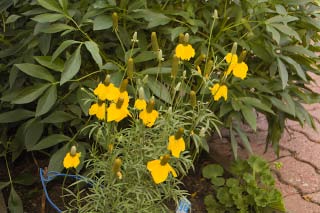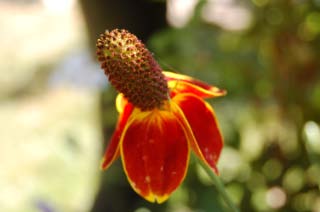My garden plants.

Gardening -- Plants that once were in my garden.
This is a list of perennials which once graced the various garden beds on my property. Some are no longer present because they were not suitable or because they did not survive for one reason or another. They are listed in alphabetical order by their common name.
- Balsam ragwort – Packera paupercula.
- Description: Grows 18 inches tall with a 12 inch spread. Bright yellow daisy-like flowers come out in June to August. This native Ontario plant grows naturally along ledges, in rocky ground and the woodlands.
- Growing preferences: Full sun to half shade, sandy or loamy soil.
- Observations: I had this plant for several years in a couple of spots, but it was not a very good performer and did not add much to the gardens. I gave away the plants I had.
- Zone:
- Year added: 2005
- Plant source: Fletcher Wildlife Garden plant exchange.
- Links to further info:
- Photo(s):
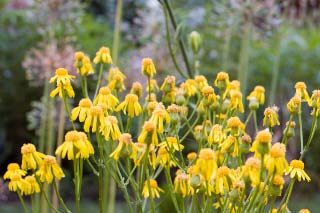
- Bleeding heart – Dicentra spectabilis.
- Description: Spring blooming plant with bright green, graceful foliage and long arching branches of pink or white (Alba) heart-shaped flowers. Grows into large clump with masses of flowers. Blooms in May and June. 24-30".
- Growing preferences: Will thrive in shade or sun.
- Observations: This version of bleeding heart dies off each year after it completes the blooming cycle. It has a significant root and tender tuber which can be deep in the ground and under surrounding plants. This makes it tricky to transplant. The seeds readily germinate if the soil surrounding the plant is not disturbed. In 2006, I located some small plants into a more shaded area to see if they performed better than their current location in the full sun. One transplant grew quite well during the 2007 season under a lilac tree. In 2008, another was transplanted to the front garden where there is more shade and the soil retains mositure. It seemed to thrive in the location and grew to a good size. Some of the small seedlings were planted nearby in 2012. Over the winter of 2012, however, all the plants died. A transplant was obtained from another gardener and the process started again. In 2014, the plant grew to a good size and bloomed nicely.
- Zone:
- Year added: 2013.
- Plant source: From another's garden.
- Links to further info:
- Photo(s):
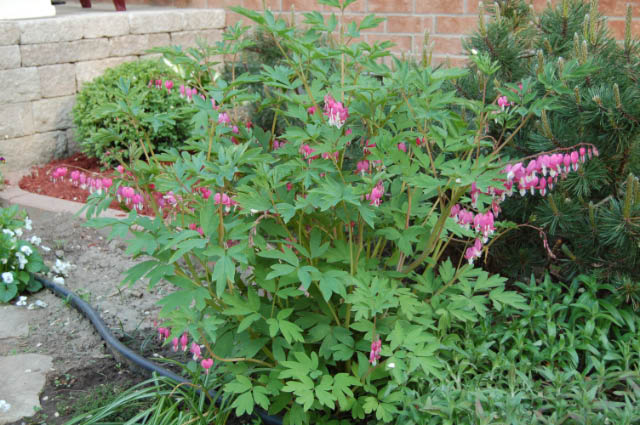
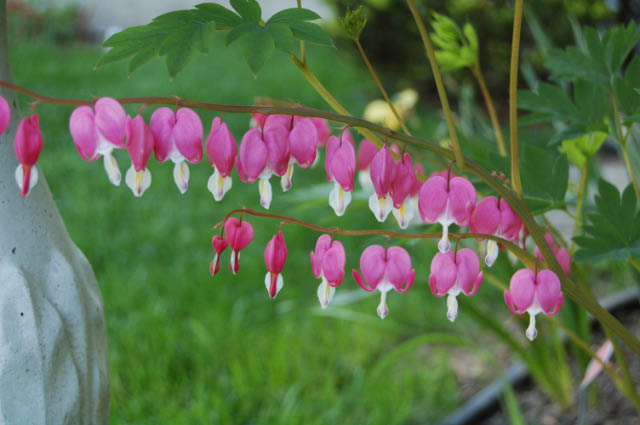
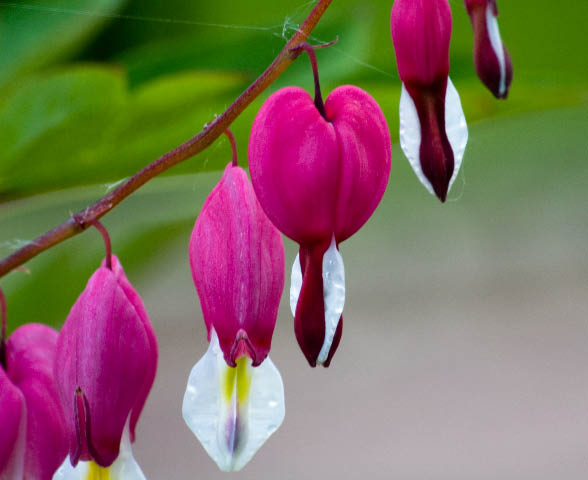
- Blanket flower – Gaillardia.
- Description: Brightly colored daisy-like flowers up to 4 inches across bloom profusely from early summer through fall above mounds of narrow downy leaves. Plants may need staking. For greater vigor, cut back after flowering. Propagate by seed or by division in spring. Set plants 18 inches apart.
- Growing preferences: Full sun in well-drained to dry, average to poor soil. They tolerate drought and seaside conditions and tend to be short-lived in fertile, moist soils.
- Observations:
- Zone: 3-8.
- Year added: 2005.
- Plant source: Central Park community plant exchange.
- Links to further info:
- Photo(s):
- Description: Grows to 36 inches tall with an eight inch spread. Purple flowers in early summer. Looks great at pond edges. This species is native to Ontario wetlands and is potentially threatened by the spread of Yellow Flag from Asia.
- Growing preferences: Part to full sun in moist to wet soil.
- Observations: This little plant did not do well in the spot where I first placed it -- under the lilac bush in the back. There was very little growth in 2006 and 2007. Moved it in 2008 to the front garden where it is more moist and shady and it bloomed. There was no bloom in 2009 despite a very wet spring and summer, perhaps due to it being crowded by surrounding plants. The drought of 2012 proved too severe for this plant and it disappeared over the winter.
- Zone:
- Year added: 2006 (June).
- Plant source: Fletcher Wildlife Garden plant sale.
- Links to further info:
- Photo(s):
- Description: "Compact classic with rich red outer petals and crisp white inner petals with a red eye. Makes an enchanting addition to spring window boxes and borders. Mature size 35cm x 30cm. Prune faded flowers." (Plant tag.)
- Growing preferences: Full sun to part shade.
- Observations: Red and white bicoloured flowers. Very attractive. Grew well in 2005, 2006 and 2007. In spring of 2008 the plant was very tiny, possibly due to growth of neighbouring plants. It was moved to the front garden where it produced a single, small bloom and then withered to nothing. Not sure why it died.
- Zone: 4
- Year added: 2005
- Plant source: Given to Linda by Eric who purchased it at a garden centre.
- Links to further info:
- Photo(s):
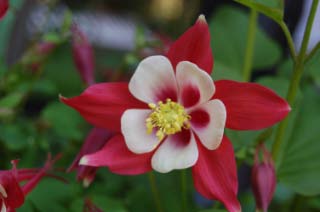
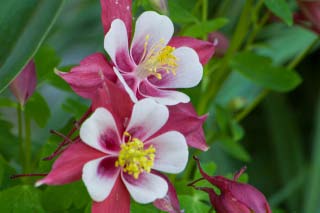
- Description: Slender pointed leaves that are green on top, gray and downy underneath on 24 - 30 inch erect stems holding small flat clusters of fluffy 1/4 inch white flowers in summer. Plants live for years with little attention. Spreads readily through underground runners. Start new plants by division in the spring. The foliage remains attractive throughout the growing season. The flowers can be gathered and dried for winter bouquets.
- Growing preferences: Plant in full sun in ordinary well-drained soil. Tolerates dry conditions.
- Observations:
Both of my plantings were in sunken
containers to control the spread of the plant. The original had been in
the same spot (patio west garden) for many years. In 2008, a section of
the plant was transploanted to the front garden and the source plant
given away in 2011. It has such a fine flower it does not show well. I
finally decided to just purge it from the garden so gave the plant away.
- Zone: 4-9.
- Year removed: 2015.
- Plant source: Unknown.
- Links to further info:
- Photo(s):
- Description: Clusters of violet to pale rose, snapdragon like flowers in late spring. Grows up to 18 inches tall with a 12 inch spread. This native Ontario species is found naturally in open fields and woodland edges. The plant was removed from the garden in 2009.
- Growing preferences: Full sun to part shade in almost any kind of soil.
- Observations:
- Zone:
- Year added: June 2006.
- Plant source: Fletcher Wildlife Garden plant sale.
- Links to further info:
- Photo(s):
- Description: Height: 3-4 feet. Ribbon Grass is an old ornamental grass that has the reputation for being very invasive. This grass has a place in the garden as a ground cover in tough sites or where nothing else seems to want to grow. It needs to be used with caution as it does spread. The variegated forms form attractive clumps. Two cultivars of ribbon grass are preferred. They are 'Picata' and 'Feesey's Form'. Both of these tend to be less invasive and easier to control. Flowers are white and occur from June-October. When planted in the shade the plants tend not to be as aggressive and are better behaved.
- Growing preferences: Ribbon grass is tolerant of a wide range of soils from dry, to moist, to wet and of sites from sun to shade.
- Observations: This grass does indeed grow and spread rapidly. I started with a very small piece and within a year it was a sizeable clump. I dug around it and inserted a collar of plastic to try to keep it under control. Frequently tilling the soil around the planting helps to keep it in check. Finally, I decided it was too invasive and I disposed of it in 2011.
- Zone: 4-8.
- Year added: 2005.
- Plant source: Central Park plant exchange.
- Links to further info: http://www.urbanext.uiuc.edu/grasses/ribbon_grass.html.
- Photo(s): July 2007
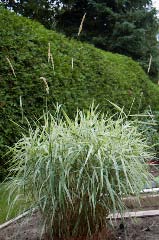
- Description: Classic prairie plant with tall, central cone surrounded by dropping yellow petals. Height 28" (70cm) with 18" (45cm) spacing. Flowers July-October.
- Growing preferences: Full sun.
- Observations: This was a replacement for a red Mexican hat I had purchased the preceding year. A fellow gardener who was getting some plants from me brought this yellow variety as a replacement. Over the winter in 2006-2007 the original plant died. However, a seed had made its way across the patio and sprouted in 2007. A large, healthy specimen resulted. This plant survived the 2007-2008 winter (there was lots of snow) and was doing nicely. Surprisingly, in the area where the original plant grew, two new plants have grown from seed. Unfortunately, their lives were cut short and they did not survive.
- Zone: Hardy 3-7.
- Year added: 2006.
- Plant source: Loblaws garden centre.
- Links to further info:
- Photo(s):
- Description: This is an excellent, well-behaved, three foot tall ground cover plant with glossy leaves that turn dark red in autumn. Small white flowers bloom in summer. This species is native to Ontario woodland edges.
- Growing preferences: Full sun to half shade in well-drained soil, preferably acidic.
- Observations: I have not had much success with my specimen. It was first planted in the west patio garden amongst the phlox and lilies. I planted it in some acidic soil from under the cedar hedge. In 2008, I moved it to a spot under the cedar hedge beside the azaleas where it gets sun from mid-morning to early afternoon. It did produce a couple of tiny white flowers on thin, long stalks. The plant was very spindly and more like a ground cover. It eventually died off.
- Zone:
- Year added: June 2006.
- Plant source: Fletcher Wildlife Garden plant sale.
- Links to further info:
- Photo(s):
- Description: Produces a mounding carpet of mossy foliage from which thin stems arise carrying white flowers. Add a little sand to centres that ‘melt out' in summer. Height 6" (15cm) with 12" (30cm) spacing. Flowers April-June.
- Growing preferences: Full sun to partial shade. Requires moist but well-drained soil.
- Observations: The delicate white flowers are adorable as they tower over the soft, low foliage of this unobtrusive plant. The sample was moved to the front garden in April 2008 and did well until 2011 when it started its characteristic dieing off in the centre. In 2013, there was only a small piece left. By 2014, it had disappeared completely.
- Zone: Hardy 5-7.
- Year added: June 2005.
- Plant source: Fletcher Wildlife Garden plant sale.
- Links to further info:
- Photo(s):
Date of last revision: 2023-10-07.
Material Copyright © 2023 David Darwin
